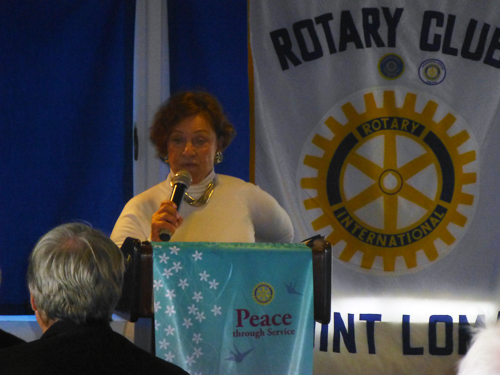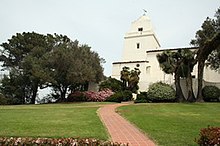I started the day meeting Diane, a former clown. We talked as she drove us to the Maritime Museum in downtown San Diego. She spoke of her experience as a clown and felt it was pretentious. In other words she felt it was pretending and not being real. I told her when I clown I am myself. I suppose reflecting on that there is a degree of acting and playing that you wouldn’t normally do, as society doesn’t give permission. She spoke the good that clowning had done for her husband who had grown in confidence in humour. They were part of a group called Clown Conspiracy who clown as volunteers to raise money for charity.
She was a very interesting lady and told me she had American Indian heritage. Her parents were teachers, her father a Principal. Her grandparents were also lovely people and they had a close family.
I learned that people could join with the tribes and they could be given an Indian name. She herself was an Indian Elder and was to give a name to her relative. Her tribe was not a big tribe but had been resurrected by others who ensured they did not lose their customs. I learned that Indian’s had made money out of Casinos.
I wondered about the African Americans and Australian Indigenous, the fact they look similar made me reflect and that there appears to be greater unhappiness in these groups. I thought of the American Indians and the Australian Aborigines being the first people and that the former did seem more accepted in the US. Although my observation is marginal and I am sure I don’t know much. I thought about class in Australia and the US. I wondered if it was the sense of inequality that was the real source of separation between people. I am not sure.
My friend indicated that she didn’t have her first home until later in life which was unsual. I wondered about housing prices, they seem high her and in Australia. Around $1600 to $2000 per month in Australia for a 2-3 bedroom. Here around $1361-$2000 was the average price of a 2-3 apartment. So not really much different. The wages for low paid workers are much lower here from $12 – $16 per hour. Note it is average not median, not always a good figure to use. It would be interested to look at median prices. I found the minimum wage is $7.25 which makes you wonder how some survive. The median average wage for non professionals in Australia is around $25.50 per hour. In both countries you can assume females earn 80% of the male wage for the same work. I’ve just checked the numbers and they are earning less. So single parents come to mind here and if they are women, earn less. So I sense here that life is actually harder for the average American citizen, even though I sense Australians do pay more across the board. Population of course is another important factor.
We stopped at the Maritime Museum where I got to view the Star of India a famous tall ship that used to take people and traded cargo to Australia and New Zealand. They would be at sea 6 months and some of the issues they faced was fresh food and scurvy, rough seas and illness. I was surprised at how large the boat was and imagined it out at sea. It was well built. Some information about the Star of India as follows:
Star of India is the world’s oldest active sailing ship. She began her life on the stocks at Ramsey Shipyard in the Isle of Man in 1863. Iron ships were experiments of sorts then, with most vessels still being built of wood. Within five months of laying her keel, the ship was launched into her element. She bore the name Euterpe, after the Greek muse of music and poetry.
Euterpe was a full-rigged ship and would remain so until 1901, when the Alaska Packers Association rigged her down to a barque, her present rig. She began her sailing life with two near-disastrous voyages to India. On her first trip she suffered a collision and a mutiny. On her second trip, a cyclone caught Euterpe in the Bay of Bengal, and with her topmasts cut away, she barely made port. Shortly afterward, her first captain died on board and was buried at sea.
After such a hard luck beginning, Euterpe settled down and made four more voyages to India as a cargo ship. In 1871 she was purchased by the Shaw Savill line of London and embarked on a quarter century of hauling emigrants to New Zealand, sometimes also touching Australia, California and Chile. She made 21 circumnavigations in this service, some of them lasting up to a year. It was rugged voyaging, with the little iron ship battling through terrific gales, “laboring and rolling in a most distressing manner,” according to her log.
The life aboard was especially hard on the emigrants cooped up in her ‘tween deck, fed a diet of hardtack and salt junk, subject to mal-de-mer and a host of other ills. It is astonishing that their death rate was so low. They were a tough lot, however, drawn from the working classes of England, Ireland and Scotland, and most went on to prosper in New Zealand. refer http://www.sdmaritime.org/star-of-india/
We then walked over to see the USS Surprise. I could see it was a battleship with a line of cannons and hammocks for the sailors. I reflected on how difficult life would be on a battle ship at sea. The quarters were rudimentary and the ship was small and cramped. Here is some information from wikipedia…
USS Surprise (PG-63), the fourth American naval ship of the name, was the British Flower-class corvette HMS Heliotrope loaned to and operated by the United States Navy from 1942-1945 as a Temptress-class patrol gunboat. After World War II she was sold as a merchant vessel and ended her life in the Chinese navy as Lin I.
Surprise sailed from Derry, Northern Ireland on 24 April 1942 to escort a convoy to Boston, Massachusetts. After an overhaul, she proceeded south and for the remainder of 1942 escorted convoys in the Caribbean, principally between Trinidad and Guantanamo Bay, Cuba. In January 1943, she extended her range into the South Atlantic and, into 1944, performed escort runs between Trinidad and Recife, Brazil.
Surprise then returned to the United States. In May 1944, she returned to the North Atlantic and, until after the end of World War II in Europe in May 1945, rotated between Newfoundland, Greenland, and Iceland convoy runs and weather patrol duty.
Surprise was decommissioned on 20 August 1945 at Chatham, England, returned to the Royal Navy on 26 August, and struck from the Naval Vessel Register on 17 September.
We then walked over to look at a Russian Submarine. I have to say I was amazed at how long this sub was, and again, the cramped conditions. Even a woman crawling through the tubes is tight, I wondered at bigger men and how they managed to squeeze from one section to another, what happens in emergency situations. Many would have bumped their heads I reacon. The electronic devices and technology was evident all over the sub, such skills and knowledge would be required to run the ship. I also reflected on being under water for such long periods, how psychologically they handled it being in close confines with other men and so on. Here is some information from wikipedia…
One of a fleet of diesel electric submarines the Soviet Navy called “Project 641,” B-39 was commissioned in the early 1970s and served on active duty for more than 20 years. 300 feet in length and displacing more than 2000 tons, B-39 is among the largest conventionally powered submarines ever built. She was designed to track U.S. and NATO warships throughout the world’s oceans. B-39, assigned to the Soviet Pacific fleet, undoubtedly stalked many of the U.S. Navy’s ships home ported in San Diego. Now, less than 20 years after the collapse of the Berlin Wall signaled the end of the Cold War, she is berthed on San Diego Bay amidst her former adversaries. Soviet Project 641 submarines, classified as “Foxtrot” by NATO, are essentially larger and more powerful versions of German World War II era U-boats. Low-tech but lethal, she carried 24 torpedoes while she was on patrol-some capable of delivering low-yield nuclear warheads. B-39 carried a crew of 78 and could dive to a depth of 985 feet before threatening the integrity of her nickel steel pressure hull. The Soviet and then Russian Federation’s navies deployed these submarines from the mid 1950s through the early 1990s. They played a part in many of the Cold War’s most tense moments including the Cuban Missile Crisis.
After the Maritime Museum we went to Anthony’s Seafood restaurant where I was treated to clam chouder. I had a lovely salad. It was lovely looking out of the restaurant window at the bay. Beyond the bay is the Pacific Ocean.
I looked into the distance and could see Point Loma where I am living. Just up from where I am living is the Point Loma Naval Base. Here is some information about this facility from Wikipedia.
Located in Point Loma, a neighborhood of San Diego, California, Naval Base Point Loma (NBPL) was established on 1 October 1998 when Navy facilities in the Point Loma area of San Diego were consolidated under Commander, Navy Region Southwest. Naval Base Point Loma consists of seven facilities: Submarine Base, Fleet Antisubmarine Warfare Training Center, Fleet Combat Training Center Pacific, Space and Naval Warfare Systems Command (SPAWAR), SPAWAR Systems Center, the Fleet Intelligence Command Pacific and Naval Consolidated Brig, Miramar. These close-knit commands form a diverse and highly technical hub of naval activity. The on base population is around 22,000 Navy and civilian personnel.
































